Cattleya Orchids
By: Sandra Tuinstra
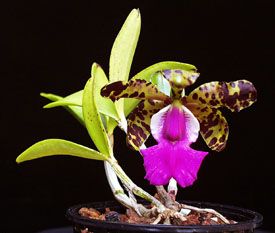 |
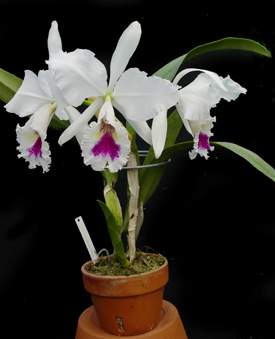 |
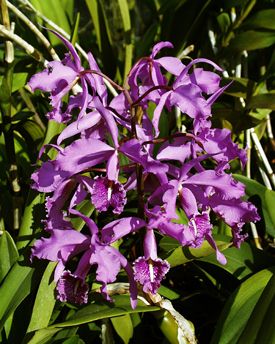 |
Abstract
Orchids date back the to the ancient Greeks age. As the centuries wore on and came to the Middle Ages orchids were gaining major notoriety and uses. It was thought that they had healing powers, so they were used to remedy many illnesses. Orchids have been thought of as a symbol of love, luxury, and beauty. People also thought that orchids had an aphrodisiac quality so they were used in love potions.
By the time the 18th century came around orchids were an established quality and orchid gardens began to become popular. Although they were thought to be only available to the wealthy and only a few botanists studied them, one of the most known was William Cattley. Eventually, Cattley had the distinction of having an orchid named after him and it is now know as the cattleya.
However, as the years went on and orchids gained even more popularity people began harvesting orchids to sell. No attempts were taken to conserve any of the species so many are now endangered. Nowadays harvesting wild orchids are banned. The orchids that are sold in the greenhouse trade are reproduced in greenhouses. Due to increases in science and propagation methods there are now over 110, 000 different hybrids.Scientific Classification
Kingdom-Plantae
Division-Magnoliophyta
Class-Liliopsida
Order-Asparagales
Family-Orchidaceae
Genus-Cattleya
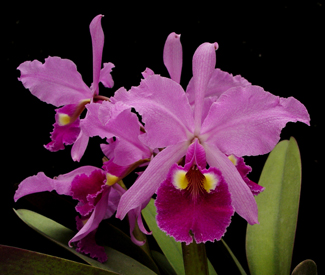
Introduction
Cattleya orchids are among the most popular orchids available. Cattleya orchids are known for their large flamboyant flowers in many colors and shapes. A typical cattleya has two fringed petals and one that has developed into a showy lip with a fringed margin. All three petals are narrow and the lip is usually decorated with markings and dots. The fringed petal margins into a tube and the flower stalk grows from a psuedobuld. Cattleya orchids belong to the genus Cattleya and are in the family Orchidaceae. The cattleya genus contains 42 species and a large array of hybrids. Hybrid flowers can be as large as 15 cm in length and in any color except true blue and black. The flowers range in number from one to ten. Cattleyas grow in tropical locations in South America up to Costa Rica. Orchids have special needs that people have to take into consideration before they get an orchid.Lighting
Light is the most important factor for growing cattleyas. Bright light to some sun should be given to the plant but direct light should be avoided during the middle of the day. Cattleyas that are exposed to intense light will develop a yellow color to their leaves. However, if the leaves have a dark green color they are not getting enough light. The best areas in the house to place a cattleya is in an east, shaded south or west window.Temperature
Day temperature for cattleyas should be kept between 70-85˚F. Night time temperatures should be between 55-60˚F. Seedlings should have a night time temperature of five to ten degrees higher than day time temperature. Mature plants are recommended to have a 15-20 degree difference between night and day. Cattleyas can tolerate temperatures as high as 95˚F if humidity, shading, and air circulation is increased.
Water
Water should be provided in the container and in the air as humidity. Mature cattleyas need to dry out thoroughly before being watered again. Seedlings need more sustained moisture. If you are unsure if the orchid needs water you can compare the dry weight of a container of the same size and amount of soil mixture. If the containers are similar in weight then your orchid should be watered. If still in doubt wait a couple of days before watering. Plants in active growth need more water than ones that in a resting period. In addition, water under 50˚F and softened water can damage the plant.
Medium/Fertilizer
If you want to keep a cattleya it is very important that you have the right growing material. They are not used to soggy soil so they must be provided with the proper well-drained mixture. A well drained mixture such as coarse fir bark to medium coarse fir bark. Even with a well drained potting mixture over watering can cause root rot and molds. You also need to fertilize on a regular schedule a high-nitrogen formula such as, 30-10-10, or something similar is the best for optimum growth. When in active growth, plants need to be fertilized every two weeks, when not in active growth once a month is acceptable. However, it would be best for the plant if it the fertilizer is not added all at once.Potting
It is best to repot every two to three years. After that amount of time the orchid out grows it pot or the soil mixture is breaking down and not draining well anymore. You can also tell it is time to repot if the rhizome protrudes off the edge of the pot or the soil mixture. After the orchid has over six pseudobulbs it can be divided into multiple plants. If dividing a plant, three to five pseudobulbs are required per division.
Resources
http://www.orchidweb.com/orchids.aspx
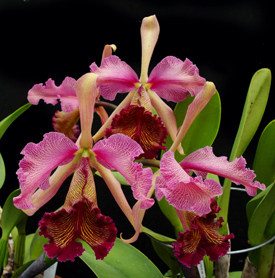 Email the author
Email the author